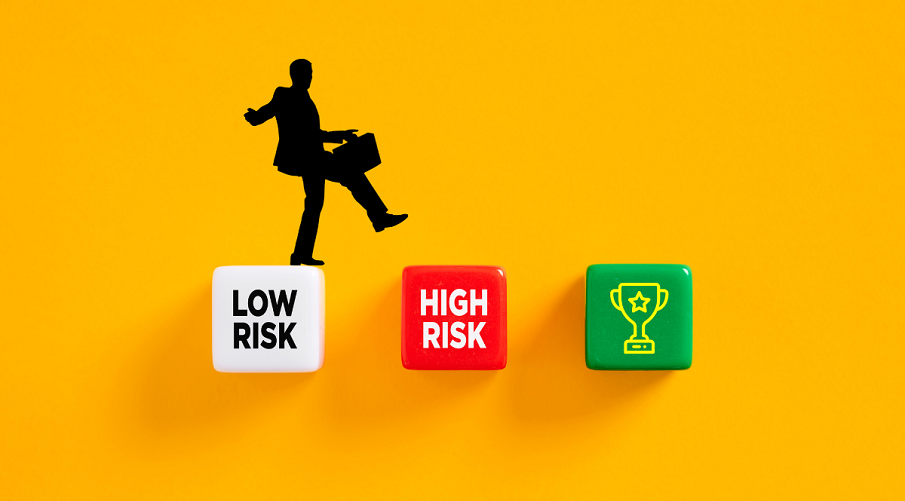Throughout your life, you’ll be faced with many big decisions, such as whether to undergo a surgical procedure or how to invest your wealth.
Almost all of these decisions will be associated with risks and rewards, but most people don’t understand how to properly balance these considerations.
What strategies can you employ to better evaluate risks and rewards associated with big decisions?
5 Ways How to Better Evaluate Risks and Rewards:

1. Do Your Research
One of the most important steps to take is researching the topic at hand.
While this may seem like an obvious step, it’s one that many practitioners skip.
There are many reasons why people skip the research phase.
For some people, it’s a byproduct of laziness, they don’t want to make the effort required to more completely understand the situation.
But for others, it’s a byproduct of unearned confidence.
They believe they already understand the situation, so they don’t go through the extra steps of researching it.
For example, many people are initially reluctant to pursue LASIK surgery because they don’t like the idea of undergoing eye surgery.
This impulse is somewhat understandable, the eyes are very sensitive and most people hate the prospect of potentially losing their vision, even if the chances of losing that vision are extremely small.
But once you start researching LASIK surgery, you’ll learn just how simple and straightforward this procedure is, and you’ll get hard data to show the likelihood of various complications.
Without a foundation of research, you won’t be able to evaluate the risks and rewards of decisions properly.
Consult as many sources as you can to achieve a fuller picture.
2. Calculate as Objectively as Possible
Next, work on calculating the risks and rewards associated with your decision as objectively as possible.
That means trying to materialize abstract ideas into something numerical, or at least something that’s easier to wrap your head around.
It also means backing up your assumptions and calculations with facts.
For example, let’s say you’re considering something as simple as gambling on the spin of a roulette wheel.
Certain aspects of this decision are very easy to calculate, you can calculate a 47.4 percent chance that the roulette wheel will land on red, and you can calculate exactly how much you would win or lose, depending on the outcome.
But you also need to consider secondary and tertiary factors that could result from your decision.
For example, how would your mood change if you won or lost?
How would that impact the rest of your life?
Can you assign a value to this and factor it back into your calculations?
3. See Things Through Alternative Lenses
Another tool to help you calculate risks and rewards more effectively is to try seeing things through alternative lenses.
Human beings suffer from biases, flaws in cognitive thinking, and a total lack of objectivity by default.
It’s on us to compensate for these distorsions to achieve more neutral, balanced thinking.
One way to do this is to pretend like you’re advising a friend.
Instead of making the decision for yourself, imagine how you might talk to a friend who’s considering such a decision.
It’s a small adjustment that can help you see the situation in a radically different way.
Many of us would advise friends differently than we would advise ourselves, and it reveals much about how we consider different variables.
Another strategy is to ask other people for advice, especially if those people have knowledge or experience in the subject you’re working on.
For example, if you’re considering opening a franchise business, you should consider talking to entrepreneurs who have opened successful or failed franchise businesses in the past.
What do they think about your situation?
What can they say about how you’re thinking about it?
4. Chart the Best and Worst Outcomes
In statistics, outliers are data points that strongly differ from other “typical” data points.
They’re easy to overlook or write off, but they’re incredibly important for achieving the best possible level of understanding for a given system.
In the context of making better decisions, you should chart out the best and worst possible outcomes from each decision available to you.
Sure, this decision may pay off reasonably 90 percent of the time, but what about the 5 percent chance that it greatly exceeds expectations?
Or the 5 percent chance that it completely fails?
How would you feel about these outcomes?
5. Play Out the “If” Factor
Finally, consider playing out the “if” factor in various directions.
Decisions are rarely straightforward because of variables that can influence the outcome of those decisions after the decision is made.
For example, you can invest in stock for a given company without realizing that the product they’ve hyped up isn’t quite ready to live up to marketers’ promises.
However, you can speculate about how different developments could impact your decision.
Try to sketch out as many “what if” scenarios as possible to triangulate your understanding of the situation as a whole.
Making big decisions will always be stressful.
But with the proper research and preparation, you can make those decisions much more objectively and much more confidently.
It doesn’t mean they’ll always pay off, but on average, you’ll have a much better chance of succeeding, and realistically, that’s all any of us can realistically strive for.






